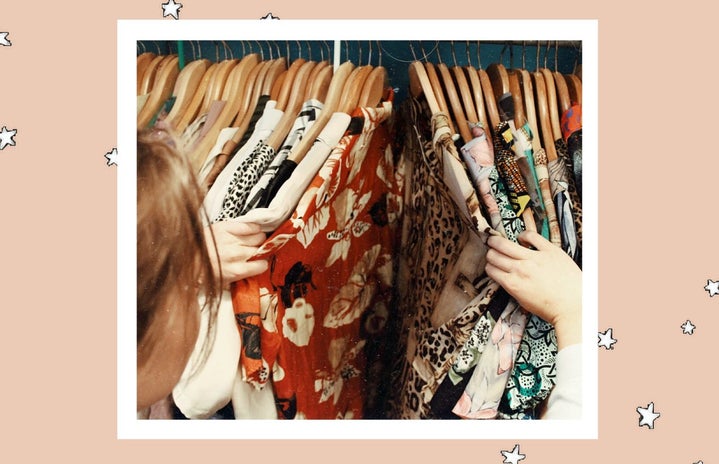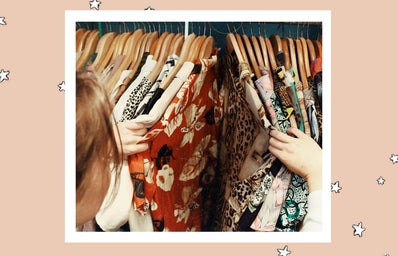The fashion industry is the 2nd biggest polluter in the world, and in the U.S. alone, over 17 million tons of used textile waste are generated each year. One of the biggest reasons for all this clothing waste? Overconsumption and microtrends pushed by the fast fashion industry.
Fast fashion is defined as inexpensive clothing produced rapidly by mass-market retailers in response to the latest trends. (Think Forever 21, H&M, Shein, Nasty Gal, etc.) The goal of fast fashion is to push new trends to consumers as quickly as possible. This results in trend seasons getting shorter and shorter, and creates a vicious cycle of consumers buying new clothes and then throwing them out as soon as they go “out of style”. Also since fast fashion pieces are so cheap, people feel compelled to purchase more than they need. This is also perpetuated by hauls on social media.
So how can we participate in trends and dress stylish without participating in this unethical and unsustainable industry? It is unrealistic to expect everyone to just not shop from fast fashion stores, however we can promote consuming less overall. (No one needs $500 worth of cheap Shein tops that will either rip or go out of style in a week.) So, one of the best ways to still participate in these trends is to invest in a few pieces that fit into your personal style. You can incorporate trendy pieces into your wardrobe if you can see yourself wearing them in the future once they are “out of style”. Pieces have the potential to go from trendy to timeless, and it all depends on your personal style. If you are only buying it to fit into a trend, but don’t truly see yourself wearing it more than 5 times, then you should rethink that purchase.
Another great way to participate in trends sustainably is to thrift similar pieces. Trends are cyclical and fashion repeats itself over the years, so you could find “trendy” pieces that are actually second hand. Thrifting itself is becoming more and more trendy, and people are realizing that vintage fashion is better quality and will last longer.
Overall, the best way to have a sustainable wardrobe is to consume less. Develop your personal style, invest in a few trendy pieces that you see yourself wearing long term, and try out thrifting and shopping from vintage stores!


